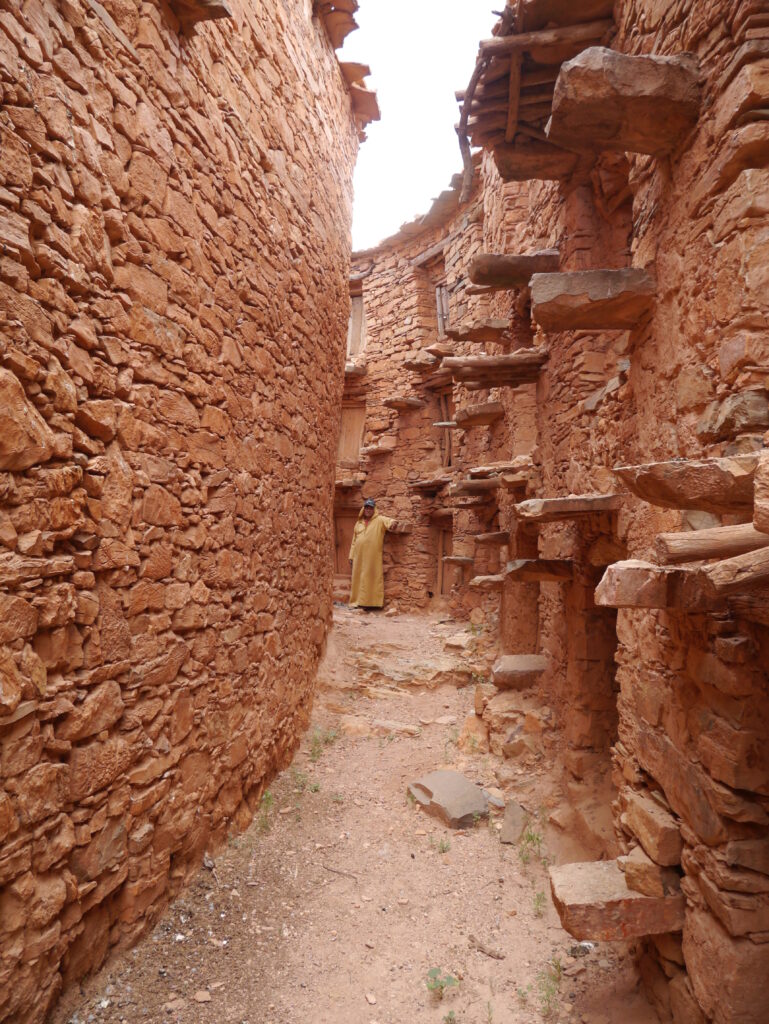Introduction to Agadir
“Agadir” refers not only to a town on Morocco’s coast but also to a traditional fortified granary used by the Berber (Amazigh) people. These structures were vital for storing grain, oil, valuables, and important documents, while providing defense against raids. I recently visited two such granaries near Tafraoute: Itoghayn and Tasguent.
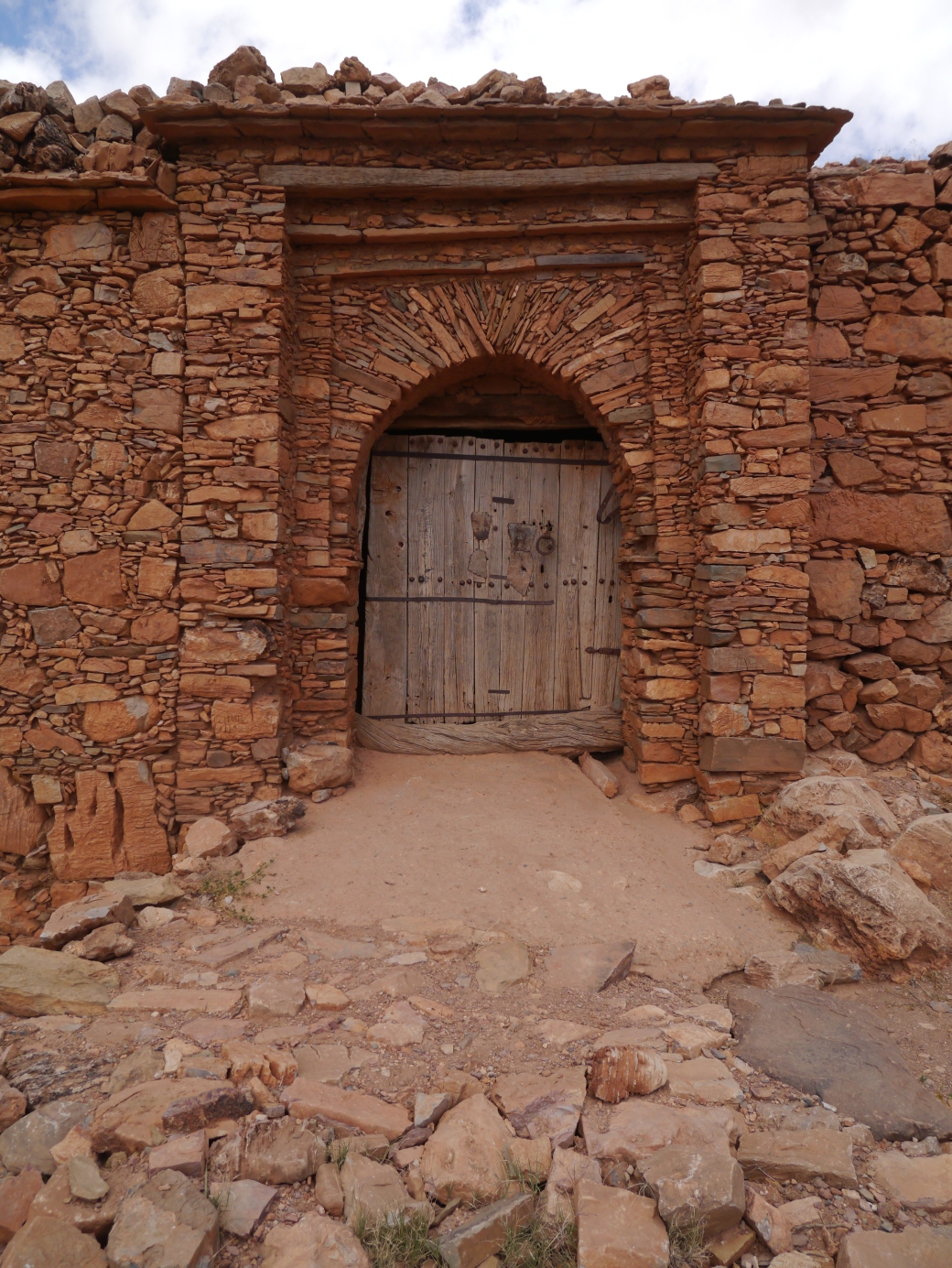
The Agadir of Itoghayn
Finding the Agadir
Itoghayn is the larger of the two granaries I visited. Upon arrival in the village, I found that most people were busy winnowing. With the help of a local villager, I was guided to the granary by a man holding a large silver key. After a brief walk up the hill, I reached the old outer door, which opened with a satisfying clunk, giving me access to the courtyard within the outer walls.
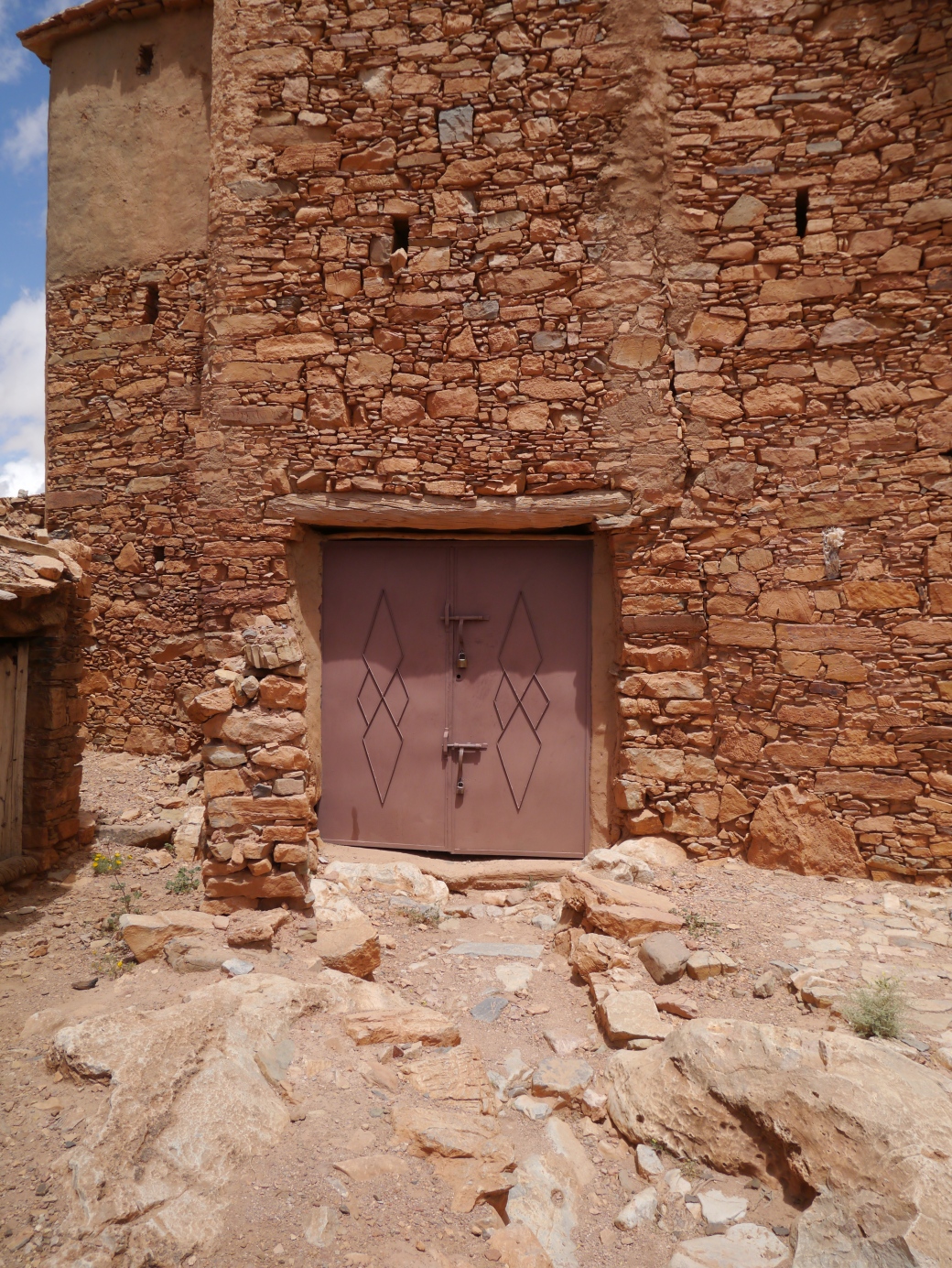
Inside the Itoghayn Granary
The main granary itself is protected by a modern metal door. Once inside, the structure reveals a series of dimly lit passageways that lead to three galleries filled with small, wooden doors, stacked three tiers high. These doors, some still padlocked, opened into individual storage spaces. I learned that these compartments were historically used to store not just grain but also valuables, functioning more like a bank vault than a mere granary.
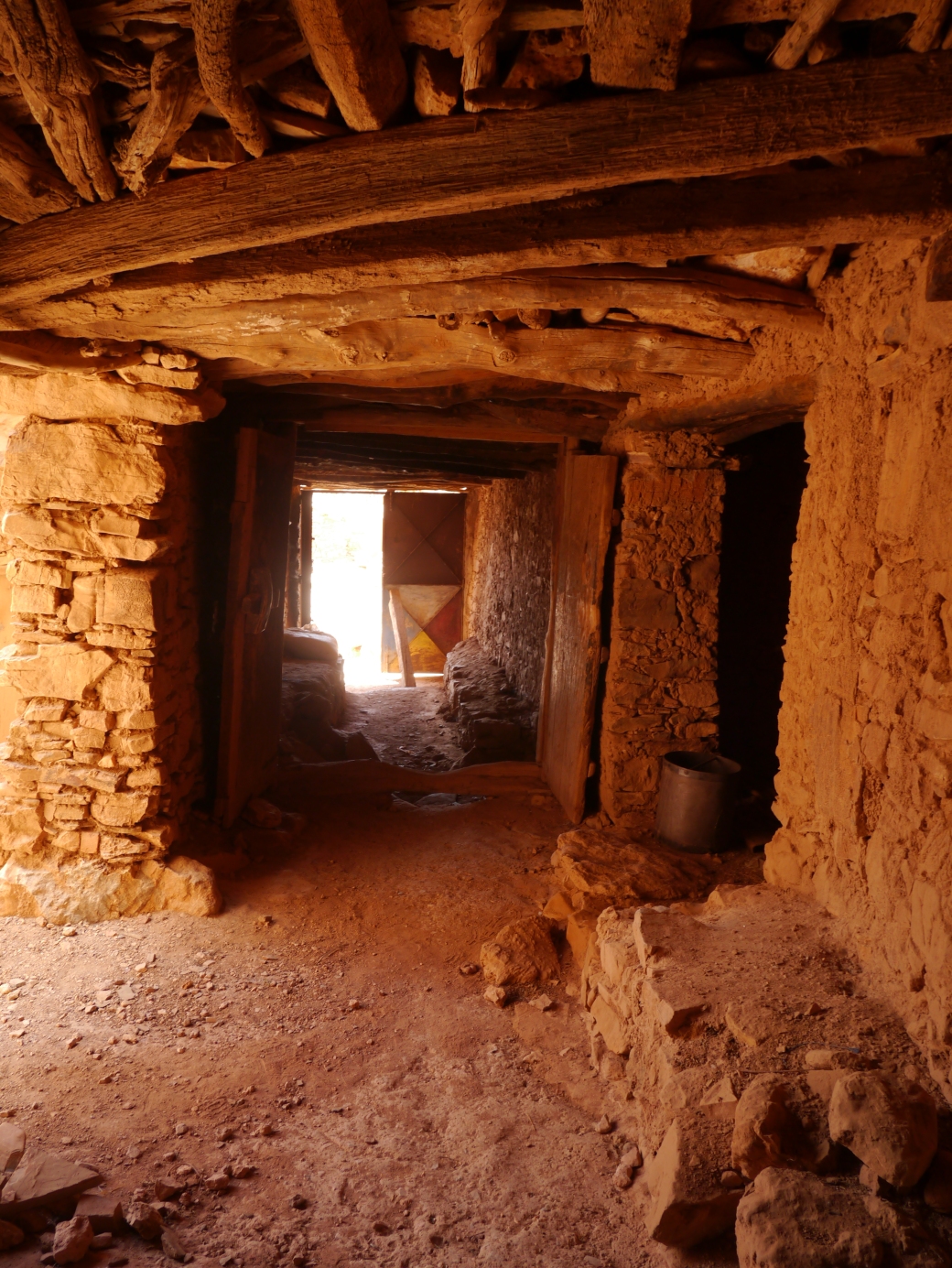
Exploring the Gallery
Each gallery is unique, with stone steps leading to the upper tiers, allowing access to all 500 storage rooms. Some doors opened to reveal wicker bags full of documents, including some with faded stamps from the French colonial era, adding a historical dimension to the site.
The View from the Roof and Tower
After touring the galleries, I was invited onto the roof. From there, I could see down into the galleries and out across the surrounding countryside. One of the towers is still intact, and after a careful climb using traditional stick-ladders embedded in the walls, I reached the top, where the view over the granary and landscape was breathtaking.
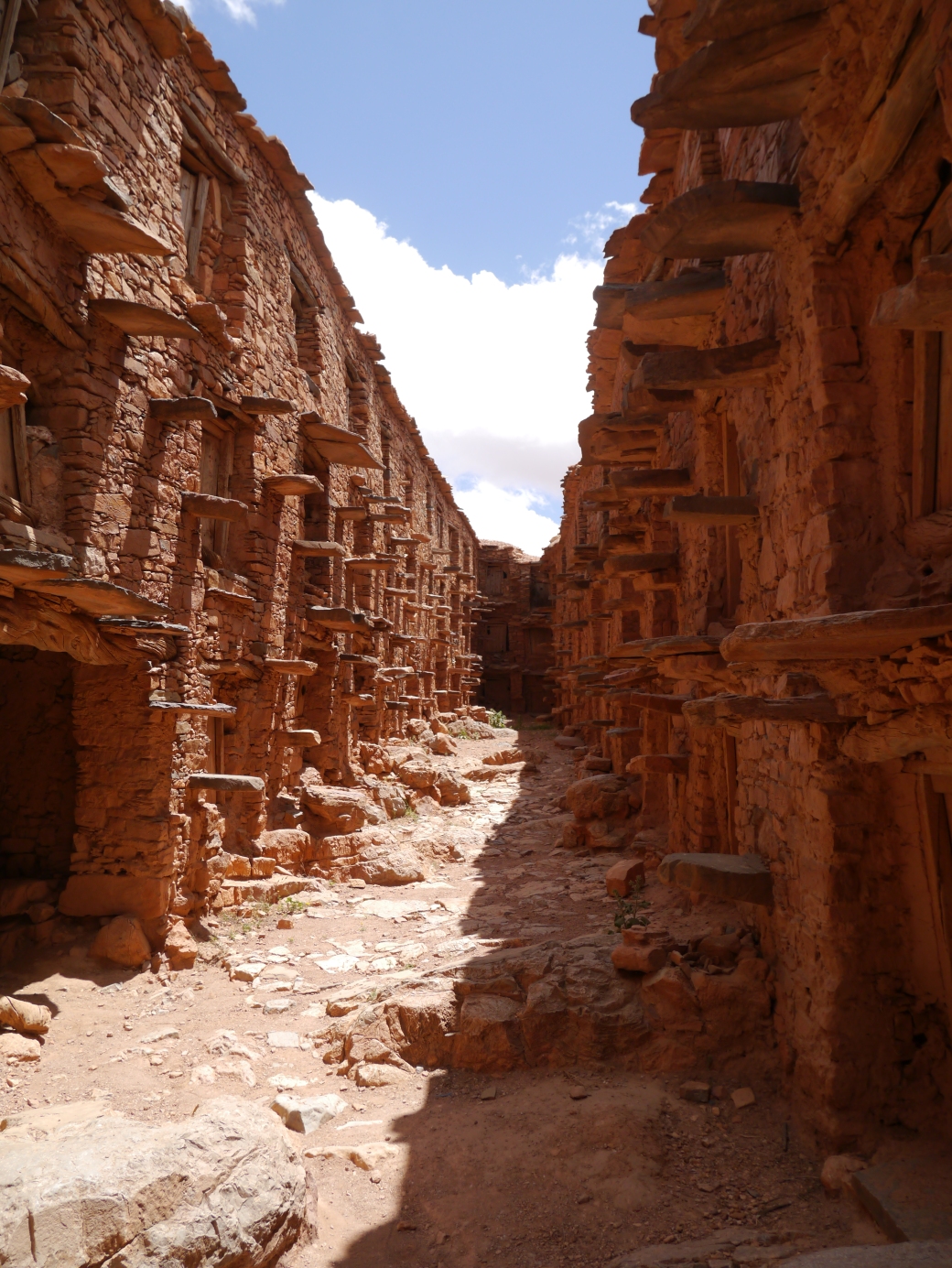
Modern Use
I also saw a room with cement-lined silos filled with grain, suggesting that the granary is still occasionally used. There’s even a cistern containing rainwater, though I wouldn’t recommend drinking it!
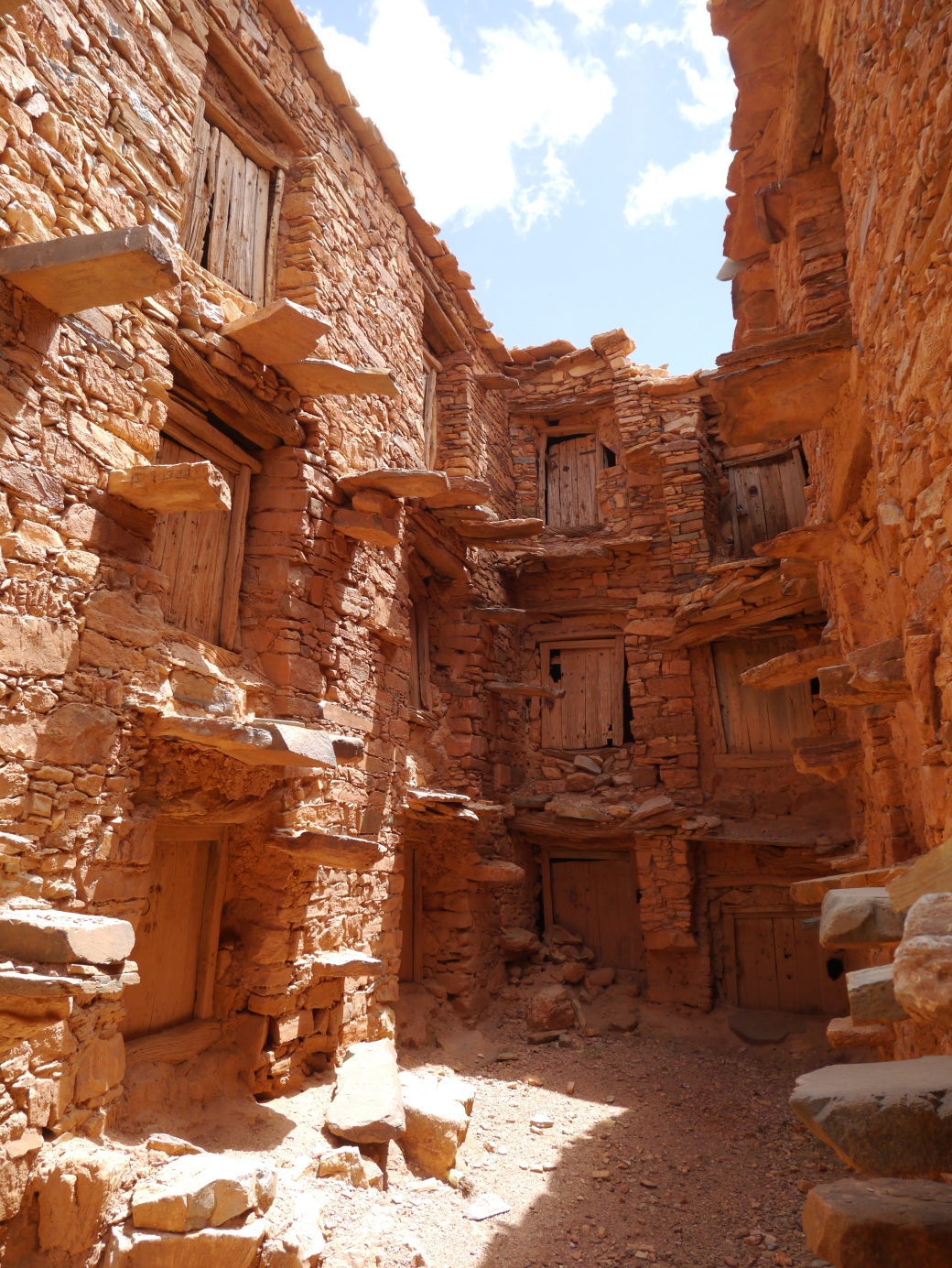
The Agadir of Tasguent
A Spectacular Location
Tasguent’s agadir is perched on a rocky outcrop, offering a dramatic view. The guardian lives on-site with his family, and I was greeted by a teenage girl and a young boy. Unlike Itoghayn, the entry fee here was set at 30 DH, and I received a printed ticket.
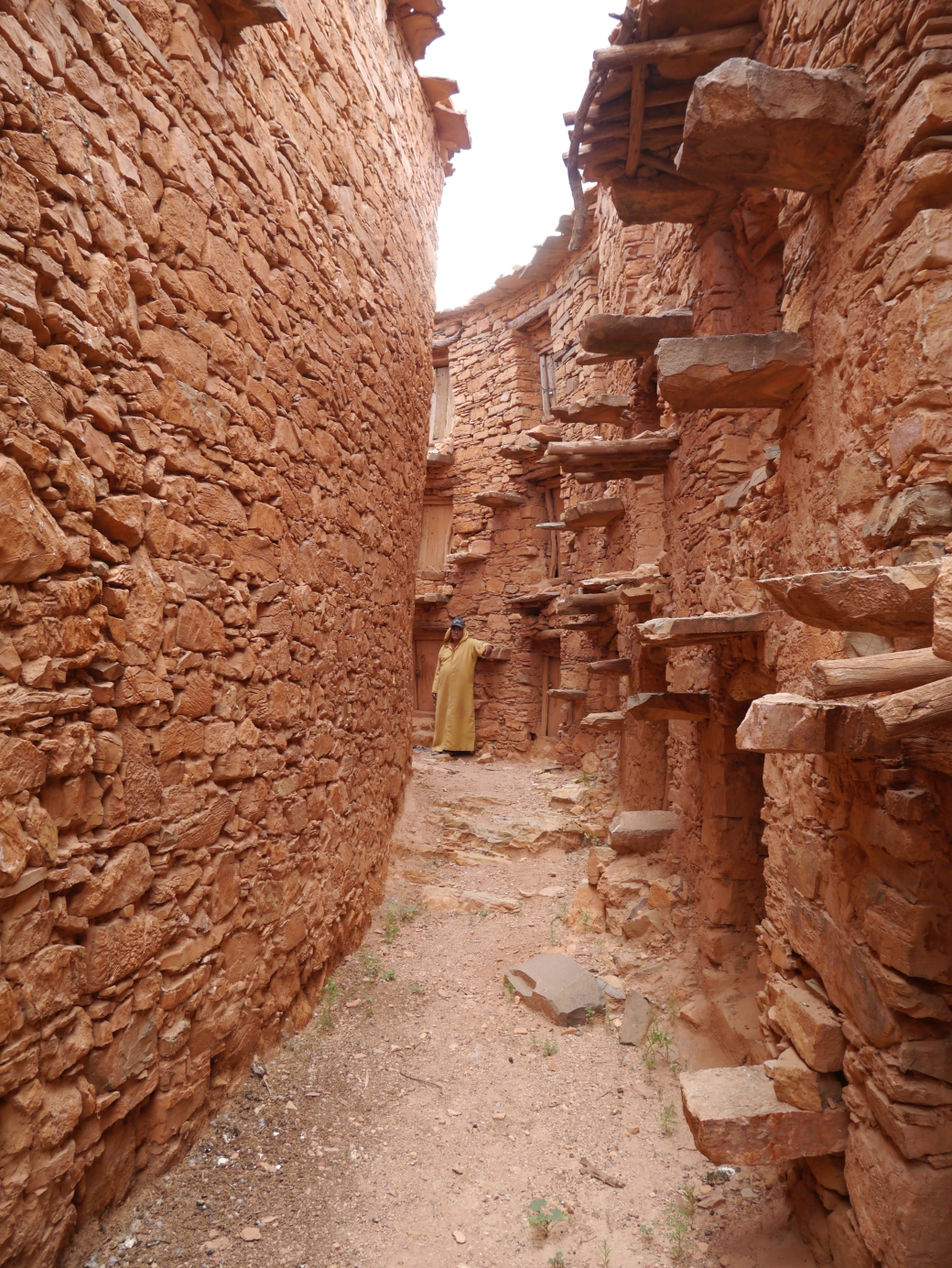
Exploring Tasguent
The layout of the Tasguent granary is less clear than Itoghayn due to its location on the rock and centuries of expansion. The place is a maze of passageways and steep staircases. I was encouraged to explore, even climbing up precarious steps that would never pass modern health and safety standards.
Traditional Locks and Doors
Many of the small doors were secured with traditional Berber wooden locks. I was shown a wooden key that, when inserted into the lock, would push the pins into place and release the bolt.
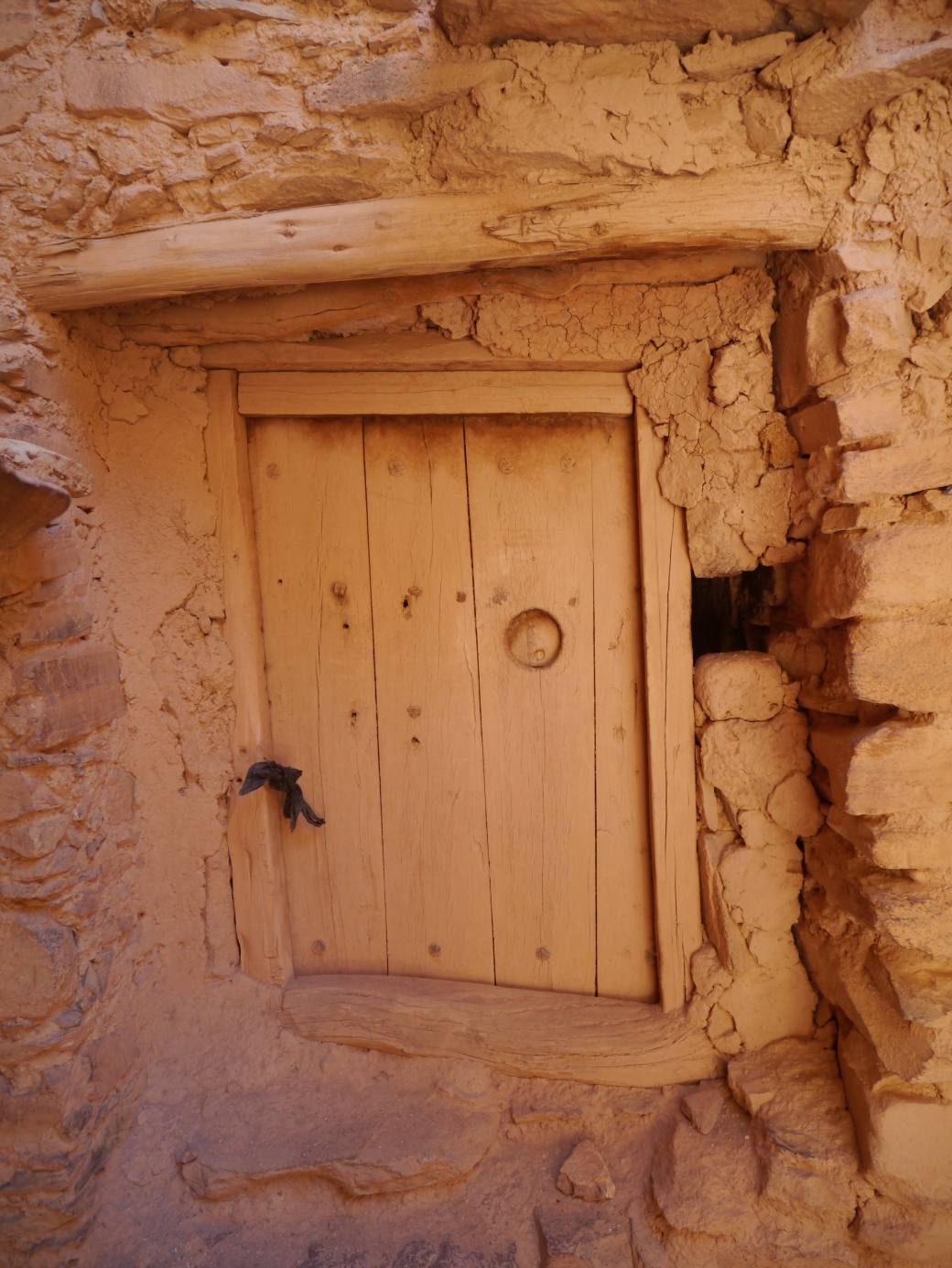
History and Defense
During tea with the guardian, he shared stories of how the agadir was once defended by watchtowers and muskets. He even demonstrated how the villagers would load and fire a musket in times of danger. Nearby, a stone bowl once used to grind gunpowder still holds water, a relic of the granary’s defensive past.
Conclusion
Both the Itoghayn and Tasguent agadirs are awe-inspiring examples of Berber ingenuity and resilience. These fortified granaries served not just as storage facilities but as community strongholds, preserving valuable resources and records for generations. Visiting these structures offered a glimpse into the unique historical and cultural legacy of the Amazigh people, and their mastery of both architecture and defense.

